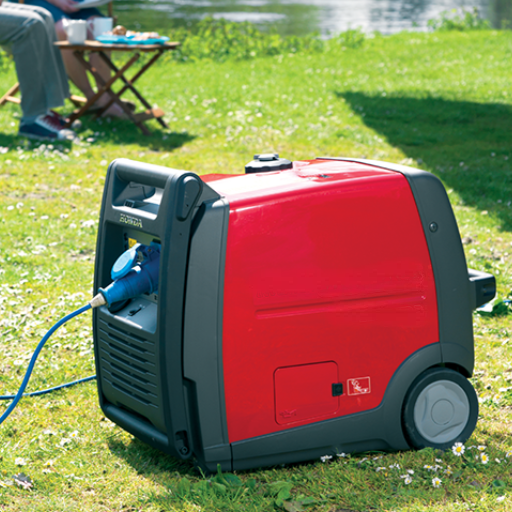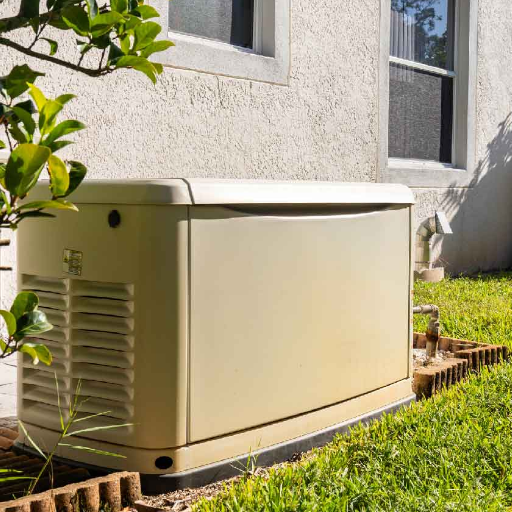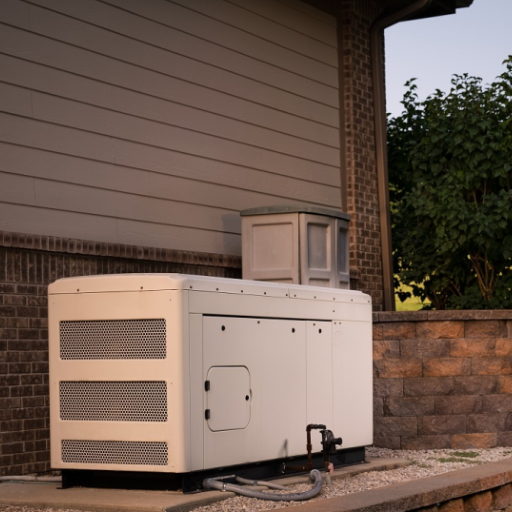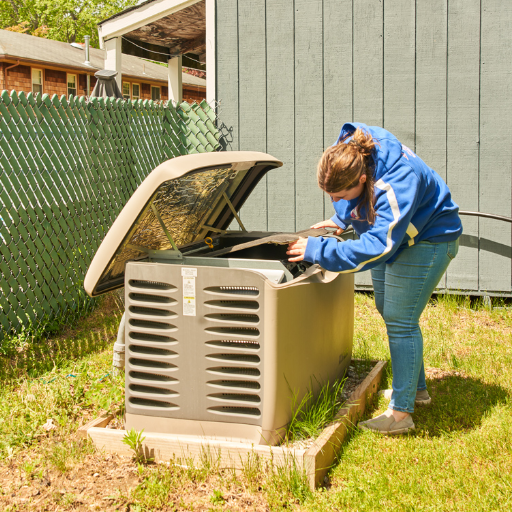Whether you’re a homeowner preparing for emergencies, a DIY person maintaining your equipment, or a business owner making sure operations aren’t disrupted, generator maintenance should be paramount. At the heart of this exceptional reliability lie the best generator parts. But then, with just as many options in the market, how do you choose one for better performance and further longevity?
Well, that is when this complete guide takes the guesswork away. We will walk you through everything you need to know about generator parts, starting with finding a reliable supplier and going through the essentials of the parts required to operate your generator efficiently. Whether you put something on or switch to something new, maybe even just a little preparation, this article will give you some power to make the right choices of your own will.
How to Find the Right Generator Part for Your Needs

- Identify the Make and Model
You should carefully confirm the exact make and model of your machine. This is important because most parts are designed to fit specific models.
- Consult the Manufacturer’s Manual
The manual or documentation for your generator will contain an explanation, a list of the parts, suggestions on the exact part number to be selected, and other information to guarantee compatibility.
- Buy From Reliable Suppliers
Only buy parts from reputable and authorized supplier entities. These suppliers manufacture components of the highest quality that are also compatible with your specific generator.
- Know Your Requirements
Find out precisely what part you want and how it functions within your generator. Common ones are filters, spark plugs, and voltage regulators.
- Check for Compatibility
Check part numbers and specifications to ensure they are compatible with the requirements of your generator before buying.
This step lets you quickly find the generator part to suit your needs while ensuring good form and function.
Understanding Your Generator’s Specifications
When evaluating your generator, it is essential to grasp the key specifications that assure performance and suitability for your intended purpose. Some of these specifications are of greater importance than others:
- Power Output (Wattage)
Generators have watt ratings, which indicate how much electrical power they can supply. A smaller portable generator for home use would be anywhere from 2,000 to 7,500 watts. For heavy industrial applications, though, generators can supply outputs well above 100,000 watts.
- Engine Type and Fuel Source
Most generators can run on gasoline, some diesel, and others natural gas or propane. Diesel generators are considered efficient, have a very long life, and are primarily found in a commercial setting. Most gasoline or propane generators are suitable for residences or portable purposes due to their ease of use and availability.
- Run Time
Run time is how long the generator can actually work on a single fuel fill-up at a working load. It may run for about 8 to 12 hours at 50% load, but heavy loading diminishes that time. Knowing about run time is crucial for planning any emergency or extended outage period.
- Noise Levels
These are measured in dB. Generators operating between 50 and 65 dB are usually considered quiet, the same noise level as average conversation. It is better to buy residential generators with a lower noise output.
- Start Type
These factors include manual recoil start, electric push-button start, and remote start. Higher-end models may also support an automatic transfer switch that allows the generator to kick in whenever commercial power fails automatically.
- Voltage and Outlets
Check out the voltage and plug options to match them with the appliances. For example, a 120/240V outlet may be preferred for powering heavier equipment, while regular 120V outlets would suffice for small devices.
- Weight and Portability
If you want to be mobile, consider size and weight. Most portable generators have wheels and handles for easy movement, while standby ones are usually installed and stationary.
- Safety Features
Today, generators are fitted with safety features such as low oil shutoff, carbon monoxide detection systems, overload protection, etc., to ensure the operator’s safety and efficient operation.
Evaluating these specifications will help you decide which generator best suits your needs. Always consult the manufacturer’s manual or contact technical support for detailed advice.
Identifying Genuine Generac Generator Parts
|
Key Point |
Description |
|---|---|
|
Locate Model and Serial Number |
Found on the nameplate or the generator frame. |
|
Use Genuine Generac Parts |
Ensures compatibility and performance. |
|
Check User Manual |
Lists part numbers and specifications. |
|
Online Parts Lookup |
Search by model/serial on Generac sites. |
|
Verify Part Numbers |
Match with manual or online resources. |
|
Avoid Aftermarket Parts |
May void warranty or reduce efficiency. |
|
Consult Experts |
Seek help if unsure about compatibility. |
|
Maintenance Kits |
Include essential components for upkeep. |
|
Common Parts |
Filters, plugs, fuses, and connectors. |
|
Purchase from Trusted Sources |
Use authorized dealers or Generac sites. |
Comparing Different Brands and Models
Standards include comparing different brands and models to get one that suits your needs. Here is a detailed description of five popular brands with some popular generators:
- Generac GP8000E
- Power Output: 8,000 running watts, 10,000 starting watts
- Fuel Type: Gasoline
- Run Time: 11 hours at 50% load
- Features: Electric start, durability steel frame, and low oil shutdown
- Best For: Home backup power and job sites
- Honda EU2200i
- Power Output: 2,200 running watts, 2,200 starting watts
- Fuel Type: Gasoline
- Run Time: Up to 8.1 hours at 25% load
- Features: Small size, quieter operation, and inverter technology produces clean power
- Best For: Recreational activities, tailgating, and power-sensitive electronics
- Champion 100692
- Power Output: 2,000 running watts, 2,500 starting watts
- Fuel Type: Gasoline
- Run Time: 10.5 hours at 25% load
- Features: Lightweight, quiet operation, and parallel-ready capability
- Best For: Camping, RV use, and light-duty power needs
- Westinghouse WGen7500
- Power Output: 7,500 running watts, 9,500 starting watts
- Fuel Type: Gasoline
- Run Time: 16 hours at 25% load
- Features: Remote start, transfer switch ready, and fuel gauge
- Best For: Emergency home power and outdoor projects
- DuroMax XP12000EH
- Power Output: 9,500 running watts, 12,000 starting watts
- Fuel Type: Dual fuel (Gasoline/Propane)
- Run Time: Up to 8 hours on gasoline at 50% load
- Features: Dual fuel capability, all-metal construction, and overload protection
- Best For: Large homes, job sites, and high power demands
Consider those factors, such as power output, fuel type, run time, and additional features, to find a generator that will perfectly suit your needs. Always observe proper maintenance and usage to get your money’s worth out of your equipment.
Where to Shop for Generator Parts Online

Reputed online sources to buy generator parts could be:
- Manufacturer Websites: Buying from the generator site ensures part compatibility and genuineness.
- Authorized Dealers: These dealers usually have genuine parts available for the more popular generator brands and offer support.
- Specialized Online Retailers: Online retailers such as Generac or Cummins Parts Online for generator parts with extensive inventories.
- E-Commerce Websites: Familiar sites like Amazon or Home Depot will offer various generator parts with user reviews.
In the question of parts online, don’t ever forget to check if these will fit your generator model.
Top Online Stores for Generator Parts
|
Store Name |
Key Features |
|---|---|
|
GenPartSupply |
It specializes in Generac parts and offers free shipping over $299. |
|
AP Electric |
Offers parts for Generac, Kohler, Cummins, and more. |
|
WEN Products |
Focused on WEN generator parts, free shipping over $25. |
|
America’s Generators |
Industrial-grade parts, including alternators and controllers. |
|
Northern Tool |
Parts, service, and repair for multiple brands. |
Benefits of Buying Parts Online
Online buying of parts offers me flexibility and the option to choose. I check the same part in many stores so that I get the best price. I need to check the user’s rating and decide accordingly. I can even shop while sitting at home. Descriptions on these websites tend to be very detailed so that one can check compatibility with his/her version of a generator. Several websites offer Fast delivery options, giving me further time to look for something else or rest.
How to Ensure Free Shipping and Best Deals
Until you can ensure it is free shipping and you have gotten the best offer, a bit of strategy and research is required when shopping for generator parts online. Various online retailers, such as Amazon, Home Depot, or other generator parts outlets, give free shipping if you meet a small price threshold, likely between $25 and $50. As of October 2023, Amazon provides free shipping on eligible items if the order exceeds $25 or the shopper is an Amazon Prime member.
Look out for seasonal sales like Black Friday or Cyber Monday- the prices on generator parts may drop sharply around that time. Consider subscribing to newsletters and email alerts from your favorite stores so you can stay abreast of special offers they support. In addition, third-party tools such as Honey and RetailMeNot can save you a few more dollars by automatically entering coupon codes at checkout.
It is always best to compare prices on different platforms. Google Shopping is an easy tool for checking which store gives the best price on the same part. When combined, these tips can save you a substantial amount of money, along with free shipping on your purchase.
The Importance of Maintenance Kits for Your Generator

Maintenance kits ensure your generator’s continuous, smooth running, and efficient functioning. These typically have air filters, oil filters, spark plugs, and engine oil. Daily maintenance with such a kit prevents breakdowns, lengthens the running life of your generator, and guarantees dependable performance in case of power outages. Using the maintenance kit suitable for your model and lying by the maintenance schedule set forth by the manufacturer will save you from expensive repairs and keep the generator in fine working order.
What is Included in a Maintenance Kit?
Maintenance kits usually include essential components and supplies needed for a generator’s smooth and efficient operation. These components are precisely chosen to protect the generator’s performance and extend its lifetime, as well as to avert unanticipated breakdowns. Here are the five most common items that come in a maintenance kit:
- Air Filter: This prevents dirt, dust, and debris from entering the engine, providing clean air for the engine and good combustion.
- Oil Filter: This filter frees the engine oil from contaminants and debris, thereby keeping the engine in good condition and increasing its operating efficiency.
- Spark Plugs: Ignite the fuel mixture in the engine, ensuring dependable starts and steady running.
- Engine Oil: Proper oil for lubricating engine parts, minimizing friction, and reducing wear and tear.
- Fuel Stabilizer: Maintains the fuel’s quality and prevents its deterioration during storage or infrequent use.
These components help in routine maintenance and ensure that the generator is up and running in good form whenever the need arises. Always use the requirements in your generator’s manual as a guide on what types of maintenance kits are recommended for your model.
How to Use Maintenance Kits for Optimal Performance
However, to apply maintenance kits for peak performance, I always start by learning about the generator’s manual to ascertain the components applicable for its particular make and model. Tools and parts listed in the kit, such as air filters, spark plugs, and motor oil, are gathered together. Base instructions are followed in the sequence in which certain parts are overhauled or replaced. These procedures, performed regularly, help keep the generator in tip-top shape, ready for use whenever I need it.
Choosing the Right Kit for Your Generator
|
Key Point |
Description |
|---|---|
|
Determine Power Needs |
Add up the wattage of essential appliances. |
|
Choose Generator Type |
Decide between portable or standby models. |
|
Select Proper Cord |
Match the cord amperage to the generator output. |
|
Use Transfer Switch |
Ensures safe and seamless power transition. |
|
Consider Inlet Box |
Provides a weatherproof connection point. |
|
Check Local Regulations |
Follow codes for installation and safety. |
|
Account for Surge Watts |
Include startup power needs in calculations. |
|
Professional Installation |
Recommended for complex setups. |
|
Safety First |
Use CO detectors and proper ventilation. |
|
Regular Maintenance |
Test and service the generator periodically. |
Understanding Transfer Switch and Voltage Regulators

A transfer switch transfers power safely and seamlessly between the generator and the main electrical grid. It ensures no backfeeding, which could severely injure utility workers or destroy equipment. They are mainly two types: manual and automatic transfer switches. Those manual require the user to operate them; automatic transfer switches sense that the power grid is deenergized and switch to generator power immediately. Hence, a transfer switch ensures an efficient power supply from the generator to the circuits and prevents the possibility of overloading circuits.
Voltage Regulators
Voltage regulators maintain a steady output voltage from the generator. They keep away fluctuations that might injure sensitive electronics or appliances. By normalizing the voltage, the regulators guarantee that the device receives power steadily, which protects the device from voltage surges or dips. Thus, voltage regulators are necessary to ensure a smooth power supply while using generators.
What is a Transfer Switch and How Does it Work?
A transfer switch is one piece of equipment that safely switches between a generator and the primary electrical grid as a power source. The mechanism isolates those circuits tied to the generator so that backfeeding, which can be a hazard to utility workers and can damage the generator, is prevented. When the main power fails, one may use the transfer switch to either manually or automatically move the power supply to the generator to maintain a seamless and safe power supply to crucial systems.
The Role of Voltage Regulators in Generators
The generator’s voltage regulator is stationed to ensure that it always outputs a steady voltage; this, in turn, assures safety and working reliability for the concerned devices against any load fluctuations or input power variations.
How to Choose the Right Transfer Switch for Your Setup
|
Key Point |
Description |
|---|---|
|
Match Amperage |
Match the switch amperage to the generator output. |
|
Manual vs. Automatic |
Manual requires flipping; automatic is seamless. |
|
Service Disconnect |
For powering the entire home. |
|
Load Center |
For essential circuits only. |
|
Power Management |
Use modules to prioritize critical loads. |
|
Installation Location |
Indoor or outdoor options available. |
|
Wattage Meters |
Prevent overload with built-in meters. |
|
Professional Installation |
Recommended for safety and compliance. |
|
Check Local Codes |
Ensure compliance with regulations. |
|
Consider Future Needs |
Plan for potential power upgrades. |
Factors to Consider When Choosing Replacement Parts

|
Key Factor |
Description |
|---|---|
|
Fit and Compatibility |
Ensure the part matches the dimensions precisely. |
|
Material Quality |
Use durable materials for optimal performance. |
|
Supplier Reliability |
Choose trusted suppliers with good support. |
|
Warranty Coverage |
Check if the part includes a valid warranty. |
|
Price vs. Performance |
Balance cost with quality and durability. |
|
OEM vs. Aftermarket |
Decide between original or compatible parts. |
|
Sustainability |
Opt for eco-friendly and ethical suppliers. |
|
Part Number Accuracy |
Verify part numbers to avoid mismatches. |
|
Design Updates |
Check for improved or updated designs. |
|
After-Sales Support |
Ensure the supplier offers technical assistance. |
Assessing the Quality of Replacement Parts
When checking the quality of a replacement part, I look at durability, compatibility, and brand reputation. I ensure that the materials are reliable and suit the demands put on them by the equipment. I carefully test whether the part fits well with the complementary parts. I like to choose brands that have stood the test of time in producing parts with consistent performance.
Understanding the Warranty and Support
When selecting replacement parts, analyzing the warranty and the support available from the manufacturer is vital. Usually, companies with more extended warranties may reflect a higher degree of confidence on their products, often implying higher quality or more extended durability. Most manufacturers set a warranty period between 6 months and 5 years, depending on how complicated a part is or how it is used. Automotive manufacturers may grant extended warranties on key components such as engines or transmissions, while basic warranties usually cover smaller components.
Support is of equal value as customers can quickly address any issues that may develop. Prudent manufacturers present accessible customer assistance, technical support when required, and documentation that is easy to find, such as user manuals or installation guides. Recent reviews of users suggest brands with round-the-clock support or online chat tend to have greater overall customer satisfaction ratings. Some manufacturers may even replace or repair an appliance within the warranty period to lessen downtime and reduce maintenance expenses.
Considering both warranty conditions and the available customer support gives you the power to choose wisely, assuring reliability and peace of mind in shopping for a replacement.
How to Ensure Compatibility with Your Generator
Fitting your generator with compatible parts is paramount to the generator’s performance and avoiding daunting issues. Below are five significant steps that can guarantee complete compatibility of the parts with your generator:
- Check the Generator Model and Specifications
Identify your generator’s exact model number and technical specifications. This information can usually be found on the generator’s data plate or in the user manual. Matching these details with the replacement part ensures it will function properly.
- Review the Manufacturer’s Recommendations
Consult the manufacturer’s guidelines for recommended replacement parts. Many manufacturers provide a list of compatible components, ensuring you purchase parts that align with the generator’s original design.
- Verify the Part Number
When possible, locate the specific part number of the component you need to replace. Cross-check this part number with the seller’s catalog or database to confirm compatibility.
- Consult with Customer Support
If you need advice, contact customer support or authorized dealers. They can clarify compatibility concerns and provide additional insights based on your generator’s make and model.
- Consider Physical Dimensions and Connections
Double-check the size, fittings, and electrical connections of the replacement part. This ensures that the component physically fits and connects properly with your generator’s infrastructure. A mismatched part could lead to operational failure or even damage.
A deep dive through these steps instills perfect confidence in your choice of replacement parts and assures your generator’s easy integration and extended operational reliability.
References
-
Energy Generator Exploration Station Senior Project Report – A detailed report on the electrical system of a generator, including its components.
-
Generator Group Project – Explores generator tube integrity and inspection issues.
-
Synchronous Generator Simulation Using LabVIEW – Discusses the use of LabVIEW software for simulating synchronous generators.
Frequently Asked Questions (FAQ)
Q: What are the key considerations when finding the right generator parts?
A: When finding the correct parts for your generator, consider the power requirements, compatibility with your existing equipment, and whether the parts are genuine OEM. Ensuring that parts fit and are designed for your specific model will help maintain performance and reliability.
Q: How do I identify the correct air filter for my generator?
A: To identify the correct air filter, check your generator’s serial and model number. This information can help you purchase the correct air filter designed for your engine to ensure optimal air flow and efficiency.
Q: Why is using genuine OEM parts in my generator necessary?
A: Using genuine OEM parts ensures your generator operates efficiently and reliably. These parts are specifically designed and tested for your generator model, which helps maintain the equipment’s performance and extend its lifespan.
Q: What role does the control panel play in a generator?
A: The control panel is a crucial component that allows you to monitor and manage the generator’s functions. It provides information on power output, engine status, and any needed alerts or maintenance, ensuring a reliable power supply.
Q: How often should I perform routine maintenance on my generator?
A: Routine maintenance should be performed according to the manufacturer’s manual, typically every 6 to 12 months, or after a specific number of operating hours. This includes checking the oil, replacing filters, and inspecting other components for wear and tear.
Q: Where can I purchase high-quality generator parts?
A: High-quality generator parts can be purchased from authorized dealers and trusted sources. Ensure the dealer provides expert support and offers a wide range of products to meet your needs.
Q: What is the importance of using the right oil in my generator?
A: Using the right oil is essential for the engine’s lubrication, cooling, and overall performance. The correct oil type helps reduce wear and tear, thus maintaining the generator’s efficiency and reliability.
Q: How do I find a reliable dealer for generator parts?
A: To find a reliable dealer, look for those with a good reputation, positive customer reviews, and certification from manufacturers like Kohler Generators. A dealer should offer expert support and a range of genuine parts and accessories.
Q: What are the benefits of portable generators over standby generators?
A: Portable generators offer flexibility and can be moved to different locations, making them ideal for temporary or emergency power needs. On the other hand, standby generators provide continuous power and are permanently installed to start automatically during power outages.
Q: How important is the design of a generator’s engine for performance?
A: The engine’s design significantly impacts the generator’s performance and reliability. A well-designed engine ensures efficient fuel consumption, optimal power output, and reduced emissions, enhancing the generator’s overall efficiency.







